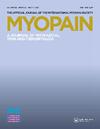Articular Cartilage Tissue Engineering: Development and Future: A Review
引用次数: 6
Abstract
Abstract Background: Articular cartilage is an avascular structure. Injured cartilage cannot self-repair, which results in joint pain and loss of mobility, eventually requiring articular cartilage replacement. Cartilage tissue engineering is a promising approach for regeneration and repair. Findings: In this paper, we reviewdc the normal structure and function of articular cartilage, the history of clinical techniques of cartilage tissue engineering, and two categories of cell sources for cartilage engineering. We also explored the environment of cell regeneration that includes scaffolds, growth factors, biomechanical stimulation in a three-dimensional bioreactor, and possible mechanical signal pathways. Conclusion: Successful cartilage tissue engineering relies on “energetic” cells, a number of growth factors, reliable scaffolds such as articular cartilage extracellular matrix oriented scaffolds, and joint-like mechanical stimuli.关节软骨组织工程:发展与展望
摘要背景:关节软骨是一种无血管结构。损伤的软骨不能自我修复,导致关节疼痛和活动能力丧失,最终需要关节软骨置换。软骨组织工程是一种很有前途的再生修复方法。结果:本文综述了关节软骨的正常结构和功能,软骨组织工程的临床技术的历史,以及软骨工程的两类细胞来源。我们还探讨了细胞再生的环境,包括支架,生长因子,三维生物反应器中的生物力学刺激,以及可能的机械信号通路。结论:成功的软骨组织工程依赖于“有活力”的细胞、多种生长因子、可靠的支架(如关节软骨细胞外基质导向支架)和类关节的机械刺激。
本文章由计算机程序翻译,如有差异,请以英文原文为准。
求助全文
约1分钟内获得全文
求助全文

 求助内容:
求助内容: 应助结果提醒方式:
应助结果提醒方式:


